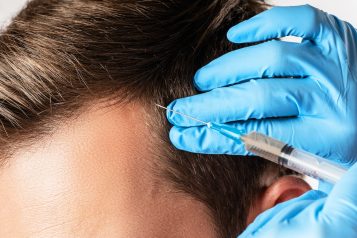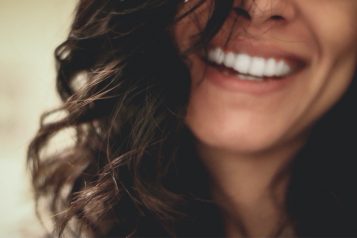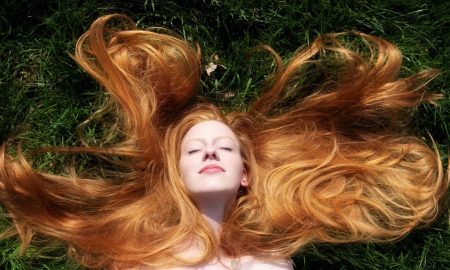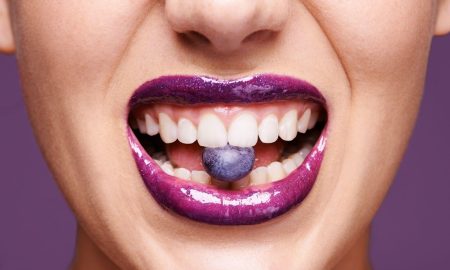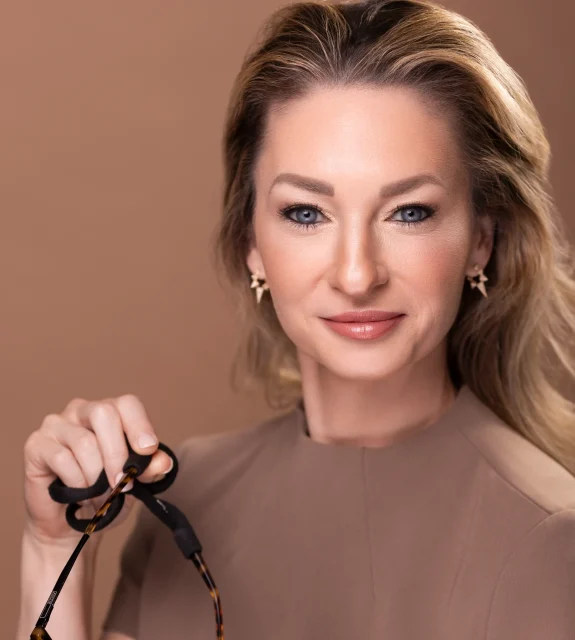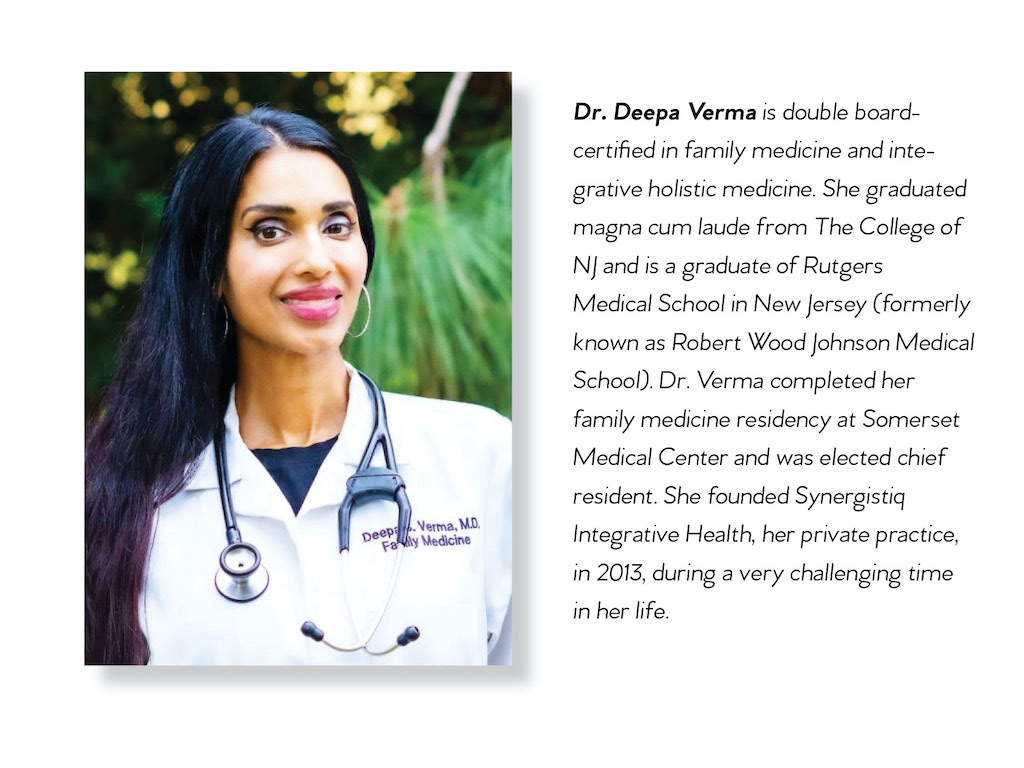
HB: What is rosacea?
Rosacea is a chronic inflammatory skin condition that usually affects the face. People may mistake rosacea for acne, eczema, or an allergic skin reaction. Rosacea can appear as redness, acne, and small pustules. It is a common skin
condition that predisposes towards a tendency to blush more.
Rosacea is common. According to the U.S. government, more than 14 million people are living with rosacea. Most people who get rosacea are:
• Between 30 and 50 years of age, usually females more than males
• Fair-skinned, and often have blonde hair and blue eyes
• From Celtic or Scandinavian ancestry
• Likely to have someone in their family tree with rosacea or severe acne
 Photo Credit: ShutterstockHB: What causes rosacea?
Photo Credit: ShutterstockHB: What causes rosacea?
It is not fully known what causes rosacea, but here are some theories:
• Rosacea seems to have a genetic predisposition.
• The immune system may play a role.
• Intestinal health is a factor.
• A mite that lives on everyone’s skin, Demodex, may play a role.
• An antimicrobial protein-peptide, cathelicidin, is found to be abnormally high in rosacea patients.
HB: How does it affect people?
Rosacea can cause more than redness. There are so many signs and symptoms that rosacea has four subtypes.
1. Erythematotelangiectatic rosacea (ETR)
Redness (erythema), flushing, visible blood vessels
2. Papulo-pustular rosacea
Redness, swelling, and acne-like breakouts, usually affecting women
3. Phymatous rosacea (rhinophyma)
The skin thickens and has a bumpy texture, usually on the nose, more common in men
4. Ocular rosacea
Eyes red and irritated, eyelids can be swollen, and the person may have what looks like a stye
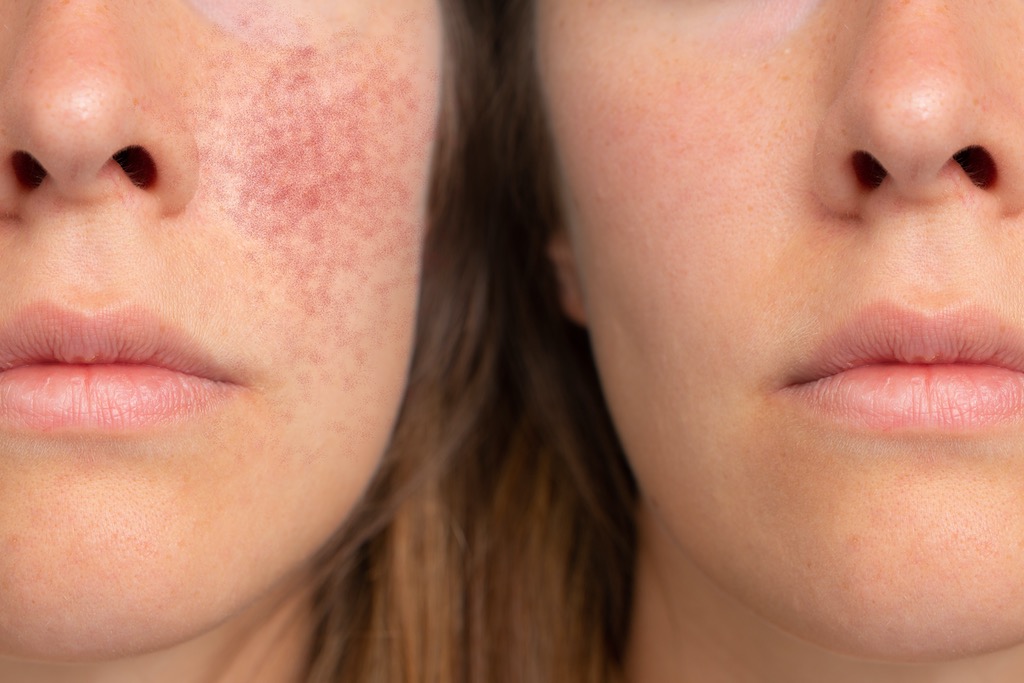 Photo Credit: ShutterstockHB: What is your personal journey?
Photo Credit: ShutterstockHB: What is your personal journey?
I have always suffered from cheek redness, and it would seem like I had blush on. I started noticing this in my teenage years. Being of Indian origin, I dismissed the possibility of having rosacea early on as it is more common in fair-skinned Caucasian populations. However, when I did a SkinDNA test, that I offer in my office, I tested positive for the gene and it suddenly all made sense. My redness and rosacea would flare up if I ate spicy foods, consumed alcohol, took hot showers, increased my core body temperature. There were many times I would feel so embarrassed and not want to be in social situations. Though people said it looked like I had blush on and it was cute, I was very self-conscious because I live such a healthy lifestyle and I felt I had no control over this. I learned to avoid the precipitating factors and engage in healthy skin aesthetic practices.
HB: What aesthetic treatments can help?
To start with, I always tell my patients to look at what they are eating and address their gut health. Make sure to have optimal levels of micronutrients, especially the fat-soluble vitamins such as A, D, E, along with omega-3 fatty acids. It will be determined if topical antibiotics may be helpful depending on the subtype of rosacea one may have. It is important to understand that while unfortunately there is no cure for rosacea, there are cosmetic and aesthetic treatments that can mitigate the course and improve the appearance of the skin. These include medical-grade skincare targeted towards rosacea, along with laser and light therapies. Erbium: YAG and CO2 lasers are helpful in addition to IPL (intense pulsed light) therapy.
HB: How do we educate people to notice signs of rosacea?
I always tell my patients to pay close attention to their skin as it is a reflection of their inner health. Monitor changes in the skin in relation to diet, alcohol consumption, sun exposure, temperature changes, stress, chemical exposure, skincare products. Get a good family history and see if there are relatives who have experienced similar skin issues. And most importantly, seek medical care. Find a knowledgeable practitioner who can help you on your healing journey.







